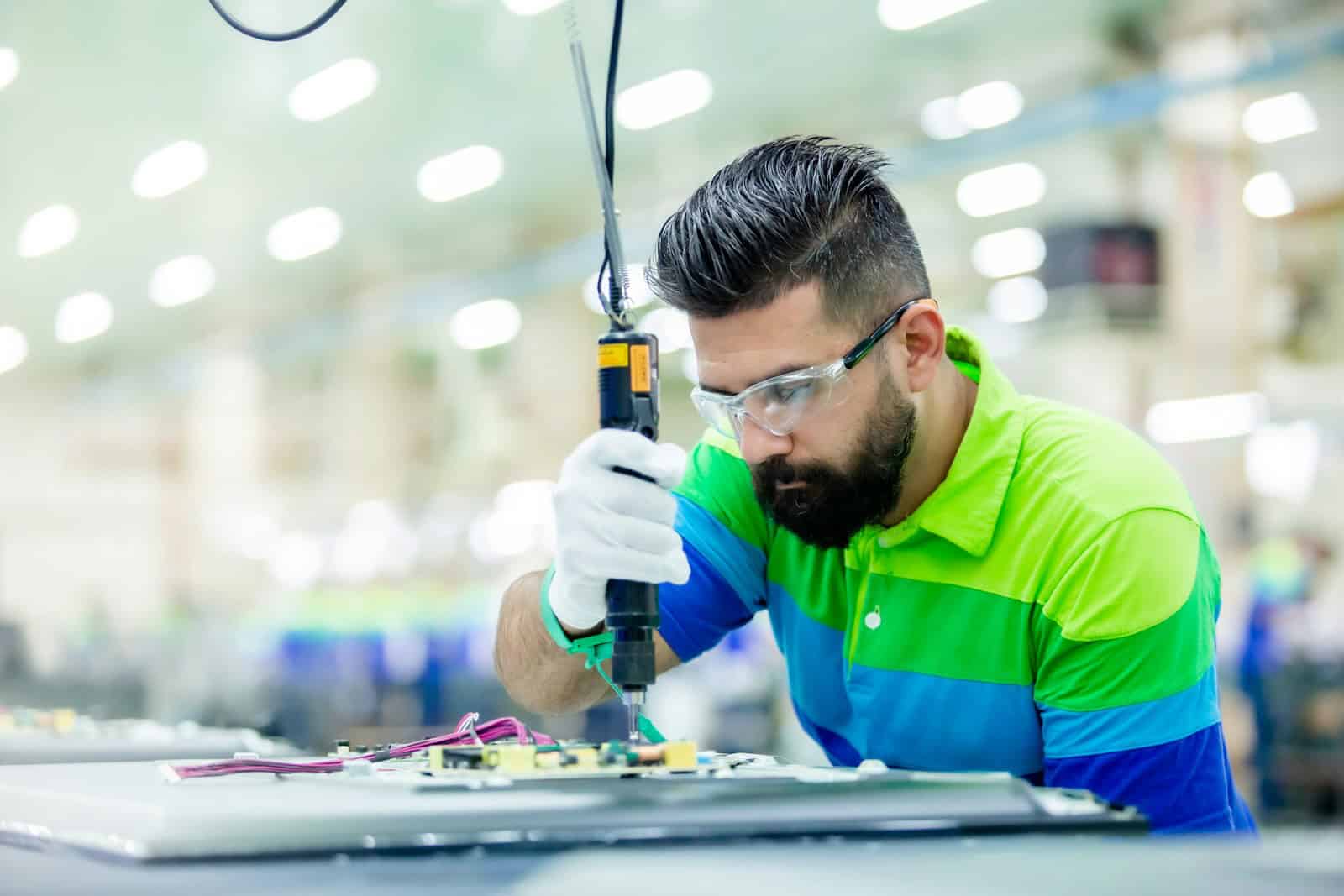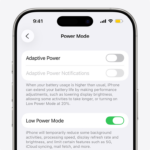Apple is accelerating its global manufacturing strategy, with a significant move to shift some iPhone production to Brazil. This decision, which initially involves assembling the iPhone 16e model at Foxconn’s plant in Jundiaí, São Paulo, reflects Apple’s urgent need to adapt to rising U.S. tariffs on Chinese goods and reduce its reliance on Chinese manufacturing.
Why Brazil?
For Apple, Brazil isn’t just a new dot on the map—it’s a strategic outpost. The country has long imposed heavy import taxes on foreign electronics, often pushing iPhone prices significantly higher than global averages. By assembling iPhones locally, Apple sidesteps those tariffs entirely for South American markets. This allows the company to price its products more competitively while expanding its reach in a region with over 420 million consumers.
But this isn’t only about South America. Apple’s decision is also tied directly to U.S.-China trade tensions. With new tariffs on Chinese-made electronics climbing up to 125% in 2025, manufacturing outside of China gives Apple the flexibility to re-route devices and reduce cost exposure for other global markets—especially the U.S.
The Broader Strategy: Diversify or Risk Disruption
Apple has been moving in this direction for years. Brazil joins India and Vietnam in a growing list of alternative production hubs. India, in particular, has become a centerpiece for iPhone production, including models like the iPhone 15 and SE, thanks to incentives from the Indian government and growing infrastructure support for electronics manufacturing.
The expansion to Brazil marks a milestone: it’s the first time a new iPhone model is being built in South America at launch. Foxconn’s São Paulo plant has produced older models before, but the iPhone 16e rollout shows Apple is willing to shift more advanced production to new geographies.
What It Means for Consumers and the Industry
Here’s why this matters beyond Apple’s balance sheet:
- Lower prices for local consumers: Brazil-made iPhones will avoid import tariffs that once inflated prices by up to 60%.
- Faster access to new models: Assembled locally, new iPhones could hit Brazilian stores faster than before.
- Potential export hub: If production scales up, Brazil could become a secondary export base for Latin America—or even North America.
Meanwhile, the rest of the tech world is watching closely. With U.S.-China trade friction expected to continue for the foreseeable future, Apple’s pivot may influence how companies like Samsung, Dell, and HP structure their supply chains in the next five years.
A New Era of iPhone Manufacturing
Apple’s manufacturing pivot is about more than cost—it’s about control. The company is building a more resilient, geopolitically agile supply chain that can withstand trade wars, pandemics, and political volatility. Brazil, once a peripheral player in Apple’s global operations, may soon be a key piece of the puzzle.
As demand for iPhones continues to grow and global trade becomes more complex, Apple’s strategy shows that the future of tech manufacturing won’t be defined by any one country. Instead, it will be shaped by flexibility, regional access, and the need to stay one step ahead of political and economic curveballs.
Key Takeaways
- Apple is assembling some iPhones in Brazil to avoid tariffs.
- Shifting production helps Apple manage supply chain risks.
- This move could affect tech industry manufacturing worldwide.
Apple’s Shift to Brazil for iPhone Assembly
Apple’s pivot to assembling some iPhones in Brazil is mostly about dodging tariffs on Chinese goods and cutting manufacturing costs for electronics.
Reasons Behind Relocating iPhone Manufacturing
Apple’s move to start building the iPhone 16e in Brazil comes down to rising costs and risks tied to manufacturing in China. Ongoing trade clashes between the U.S. and China play a big part. Apple’s looking to shield itself from sudden policy shifts and supply hiccups.
So, the company’s spreading out production. Brazil puts Apple closer to Latin American buyers and helps it sidestep restrictions that could slow shipping or jack up prices. The hope is that this strategy gives Apple steadier iPhone output and a tighter grip on its supply chain.
Role of Tariffs and Import Tax on Chinese Goods
Tariffs and import taxes are now a big piece of the puzzle for companies like Apple. The U.S. slapped strict tariffs on a ton of Chinese goods, including smartphones. To dodge those, Apple’s moving some assembly to places with lighter penalties and fewer trade headaches.
Brazil’s got its own taxes, sure, but making iPhones there means those units skip local import fees, which helps keep prices in check. That’s good news for Brazilian buyers and for Apple’s margins. By shifting assembly, Apple avoids the worst of the China-linked taxes, keeping costs lower for itself and customers.
Strategic Importance of Brazilian Facilities
Having iPhone assembly in Brazil means Apple can respond faster to local demand. Building devices in-country shortens shipping times and reduces reliance on distant factories. That’s a big deal if there’s a shipping snag or import rules change out of the blue.
Setting up shop in Brazil gives Apple a backup to its China operations. Diversifying the supply chain makes Apple less exposed if trouble hits in any one country. It’s a way to keep iPhone production humming even if global events get messy.
Brazil’s got a skilled workforce and a solid electronics assembly industry, so it’s a logical partner for Apple’s expansion. Local production could also help Apple stay on the good side of regional governments and meet requirements for selling devices made inside Brazil. Want more? 9to5Mac covers Apple assembling iPhone 16e in Brazil.
Impacts on Global Supply Chains and the Tech Industry
Apple’s choice to shift some iPhone assembly from China to Brazil could shake up the supply chain, device pricing, and how other tech companies plan their manufacturing. This isn’t just about tariffs; it’s about changing trade policies and the differences between manufacturing hubs like India, Vietnam, and Brazil.
Effect on iPhone Prices and Availability
Thanks to new tariffs on Chinese imports, Apple’s costs are up—by about $8.5 billion a year for iPhones and similar gadgets. That could mean price hikes for U.S. customers. Apple’s trying to keep prices in check, but it’s a challenge.
One workaround has been to airlift big batches of iPhones from India and China to the U.S. before tariffs hit, dodging shortages for now. But that’s just a stopgap. With tariffs sticking around, buyers might notice slower deliveries and higher prices, especially on fresh models.
Comparisons with Manufacturing in India and Vietnam
Apple’s supply chain is scattered. Previously, it moved some production to India, taking advantage of better tariff breaks. Phones from India face about a 26% U.S. tariff, while Brazil-made ones see just 10%. That gives Brazil the edge at the moment.
Vietnam’s in the mix too, but with its own trade hurdles and not quite the same scale as India or China. Labor costs, government incentives, and trade rules all play a part—so Apple’s constantly rebalancing where it builds iPhones. Moving some production to Brazil and India helps buffer against sudden policy swings and supply chain drama.
Influence of Trade Policies and the Trump Administration
These tariffs came out of trade policy changes under President Donald Trump, aiming to push companies like Apple away from relying on China. The result? Disruption across the global tech supply chain, hitting a lot of companies at once.
Apple’s ramping up iPhone assembly in Brazil and India to deal with these new rules. Other tech giants might follow suit, looking to dodge tariffs and keep costs in check. Moves like this show how much trade policy—tariffs, exemptions, and country-specific rules—can steer the tech industry and shift prices and availability for everyone. For more, check out how Trump’s tariffs are causing supply chain headaches for Apple and others.
Frequently Asked Questions
Apple’s decision to assemble iPhones in Brazil is shaped by tariffs and the push to diversify manufacturing. This move ripples through production, pricing, global trade, and even quality control and logistics.
What impact do tariffs on China have on the global production strategy for the iPhone?
Tariffs on China drive up the cost of making iPhones there. Apple looks to other countries like Brazil to cut those expenses and keep its products competitive. It’s a way to spread out risk and avoid getting caught by political or trade blowback in one region.
How will iPhone production in Brazil affect the cost for consumers in various markets?
Making iPhones in Brazil could help Apple skip some import taxes and tariffs, at least for Brazilian customers. Prices there might drop or stay more stable, while costs elsewhere depend on local taxes and rules. Folks outside Brazil probably won’t see price changes right away.
Which iPhone models are being assembled in Brazil, and are there any differences in specs or features?
Apple’s already building models like the iPhone 16e in Brazil, mostly for the local market. Specs and features are the same as those made elsewhere—so users aren’t missing out.
What measures is Apple taking to ensure quality control in their Brazilian manufacturing plants?
Apple keeps a pretty tight grip on quality at all its assembly sites. The company monitors factories for safety and quality compliance, and products get checked at every stage of the process.
What are the implications for trade relations between the United States, China, and Brazil as a result of this shift?
Apple’s move shows how trade relationships are shifting. The company’s relying less on China, thanks to higher wages and tariffs. This could boost Brazil’s trade with the U.S. and shrink China’s role in iPhone assembly. Other countries might see similar investments pop up.
How does Apple plan to manage supply chain logistics for iPhones assembled in Brazil?
Apple leans on a big network of suppliers and shipping hubs for global distribution. iPhones from Brazil mainly serve the local market, which keeps logistics simpler. If Apple expands, it’ll tweak shipping routes and inventory to get devices where they need to go, on time.







